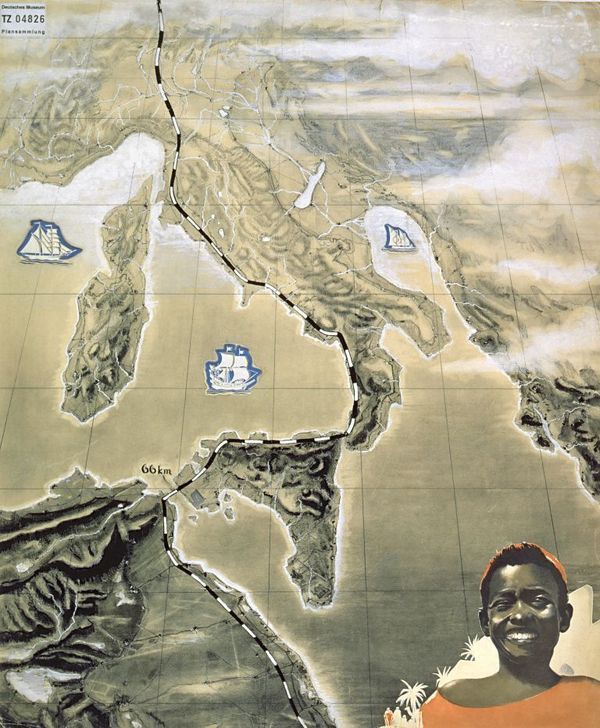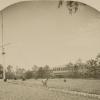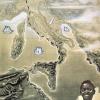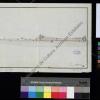Behind the enclave

Atlantropa was a project devised by Herman Sörgel, an architect of Germany in the 1920s
North Africa, Europe’s closest neighbor to the south, has long been a focus of interest to countries from the north.
Although the Maghreb was relatively accessible from the Iberian Peninsula, the Sahara desert posed a barrier for further exploration of the continent. This had excited the imagination of explorers, engineers, and ultimately investors from the north, who envisaged the biggest, the boldest, and sometimes the wildest designs. From the 1870s on, there were several attempts to build a Trans-Saharan railway connecting the French colonies of Algeria and Niger.
The last of these, undertaken in 1940s by the French Vichy government, even produced a few kilometers of track, but it was abandoned like its predecessors. In 1932, an imaginary Wüstenschiff (Desert Ship) was proposed by a German engineer to carry three hundred passengers through the desert. Again, the idea was dropped. A similar fate befell the most recent international scheme, sponsored by the United Nations.
The program was launched in the late 1960s with the visions of building some three thousand kilometers of road, linking independent Algeria and Nigeria with some branches to Mali and Tunisia. Some sections of the Trans-Saharan Highway have been built and today serve local traffic. In 1970s, The Financial Times predicted, "If built, the trans-Saharan road would revolutionize the economic infrastructure of the entire sub-continent"; this did not come true.
An international consortium was formed to build the highway. The survey and preliminary works were carried on by a team of nearly one hundred engineers from Canada, France, Italy, and Czechoslovakia, and the entire project was elaborated by the Polytechna Foreign Trade Corporation from Prague.
 Previous Story
Next Story
Previous Story
Next Story
How to cite this page
Slawomir Lotysz, 'Behind the enclave', Inventing Europe, http://www.inventingeurope.eu/story/behind-the-enclave
Sources
- Gall, Alexander. Das Atlantropa-Projekt: die Geschichte einer gescheiterten Vision: Hermann Sörgel und die Absenkung des Mittelmeeres. Frankfurt: Campus, 1998.



















